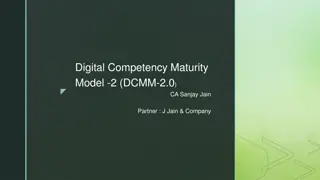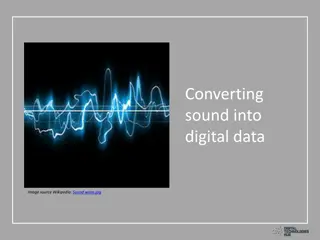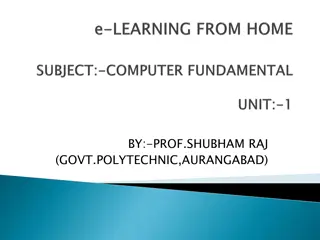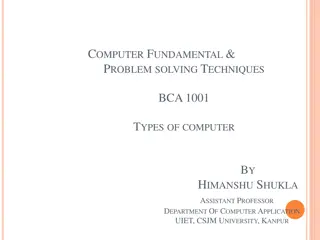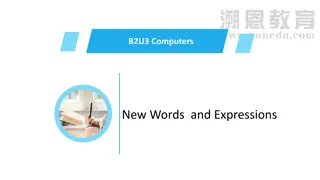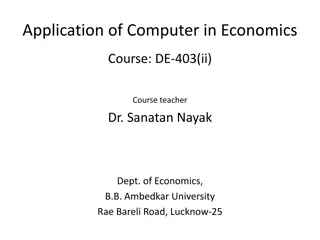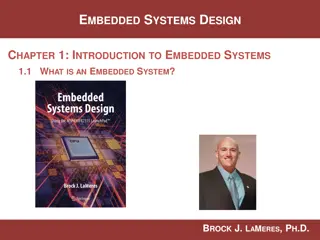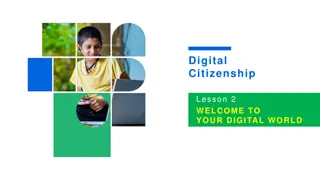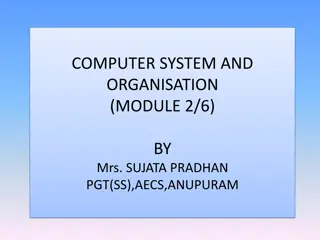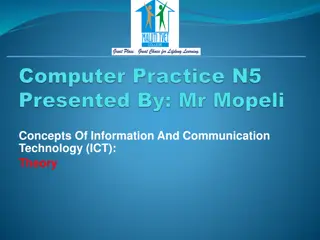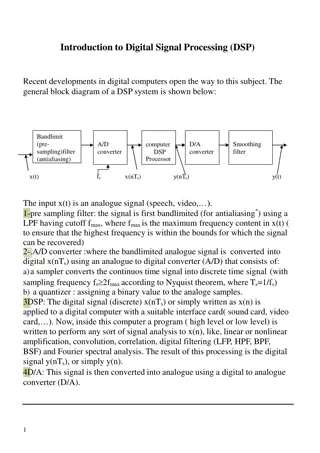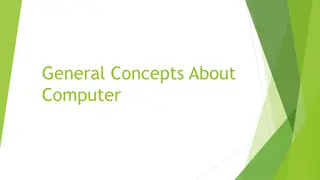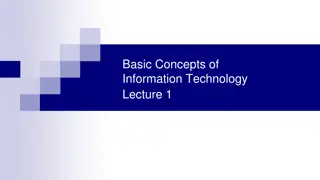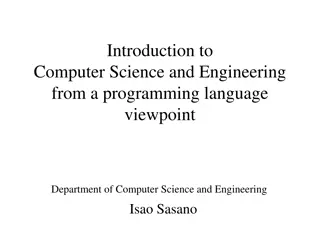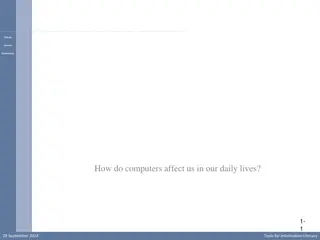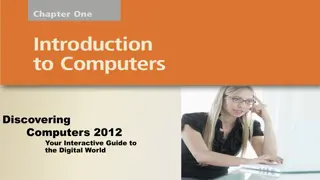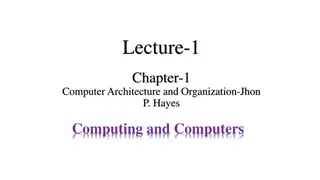Evolution of Computers: From Abacus to Digital Era
An electronic device that operates upon data, a computer stores, processes, and retrieves information as needed. The evolution of computers traces back to devices like the abacus, Napier's bone, punched cards, Charles Babbage's engines, Mark I computer, and the ENIAC, marking the transition from manual calculating tools to advanced electronic systems. Gradual advancements led to the development of computer generations, starting with vacuum tubes and batch processing in the 1950s.
Download Presentation

Please find below an Image/Link to download the presentation.
The content on the website is provided AS IS for your information and personal use only. It may not be sold, licensed, or shared on other websites without obtaining consent from the author.If you encounter any issues during the download, it is possible that the publisher has removed the file from their server.
You are allowed to download the files provided on this website for personal or commercial use, subject to the condition that they are used lawfully. All files are the property of their respective owners.
The content on the website is provided AS IS for your information and personal use only. It may not be sold, licensed, or shared on other websites without obtaining consent from the author.
E N D
Presentation Transcript
Computer A Computer may be defined as an electronic device that operates upon data. So, a computer can store, process and retrieve data as and when desired.
Evolution of Computers Earliest device for calculation purpose was ABACUS. Here, simple addition and subtraction can be performed efficiently by positioning the beads appropriately on the rack.
Then, there was another manual calculating device called NAPIER s BONE which is basically a multiplication calculator.
Concept of PUNCHED CARDs was given by Herman Hollerith, which are used as an input media in digital computers.
Charles Babbage, considered as father of Digital Computer came up with Difference Engine in 1822. Then came up Analytical Engine capable of performing basic arithmetic functions.
Some of the well known early Computers The Mark I Computer(1937-44) This was the first fully automatic calculating machine designed by Howard. This was extremely reliable machine but was very complex in design and huge in size. This could perform five basic arithmetic operations: ADD, SUBTRACT, MULTIPLY, DIVIDE and TABLE REFERENCING.
The ATANASOFF-BERRY Computer This used vaccum tubes for internal logic and capacitors for storage. The ENIAC The Electronic Numerical Integrator And Calculator. The first all electronic Computer. Much faster in speed as compared to previous systems.
First Generation(1950s) Vacuum Tubes were used in the circuits of these computers. Input and output operations were done using punched card technology. For external storage magnetic tapes were used. Machine was able to do one job at a time, therefore batch processing was adopted. The language used by these computers was machine language and assembly language. Examples of Computers are: UNIVAC, IBM 650 etc.
Second Generation(1960s) Transistors were used in the circuits. Input operations were performed using punched cards and magnetic tapes and for output operations punched cards and paper were used. Orientation was towards multiple users i.e. the machine was able to process multiple tasks concurrently. The high level languages like FORTRAN, COBOL, BASIC etc were used as languages by computer. Examples of Computers: IBM 1400 and 7000 series etc.
Third generation (1970s) Integrated circuits replaced transistors. In spite of there smaller size they were capable to perform better than transistors. For data input and output operations monitors and keyboards replaced punched cards. For external storage magnetic disks were used. Sophisticated operating systems which were capable of handling several jobs concurrently were used. More advanced high level languages like PASCAL were used. Examples of computers: IBM
Fourth Generation (1980s) The circuits used VLSI and microprocessors of virtually microscopic size, which led to drastic cut on size of computer. I/O devices were same monitors, keyboards etc Magnetic disks were the primary devices used for external storage. Application software for micro computer became popular in this generation. Examples of computers: IBM Systems.
Fifth Generation(late 1990s) The computers of this generation use optic fibre technology to handle Artificial Intelligence. These computers have capacity to think and reason which can be used to solve problems where human intelligence is required. Expert systems are examples of systems implementing Artificial Intelligence.







